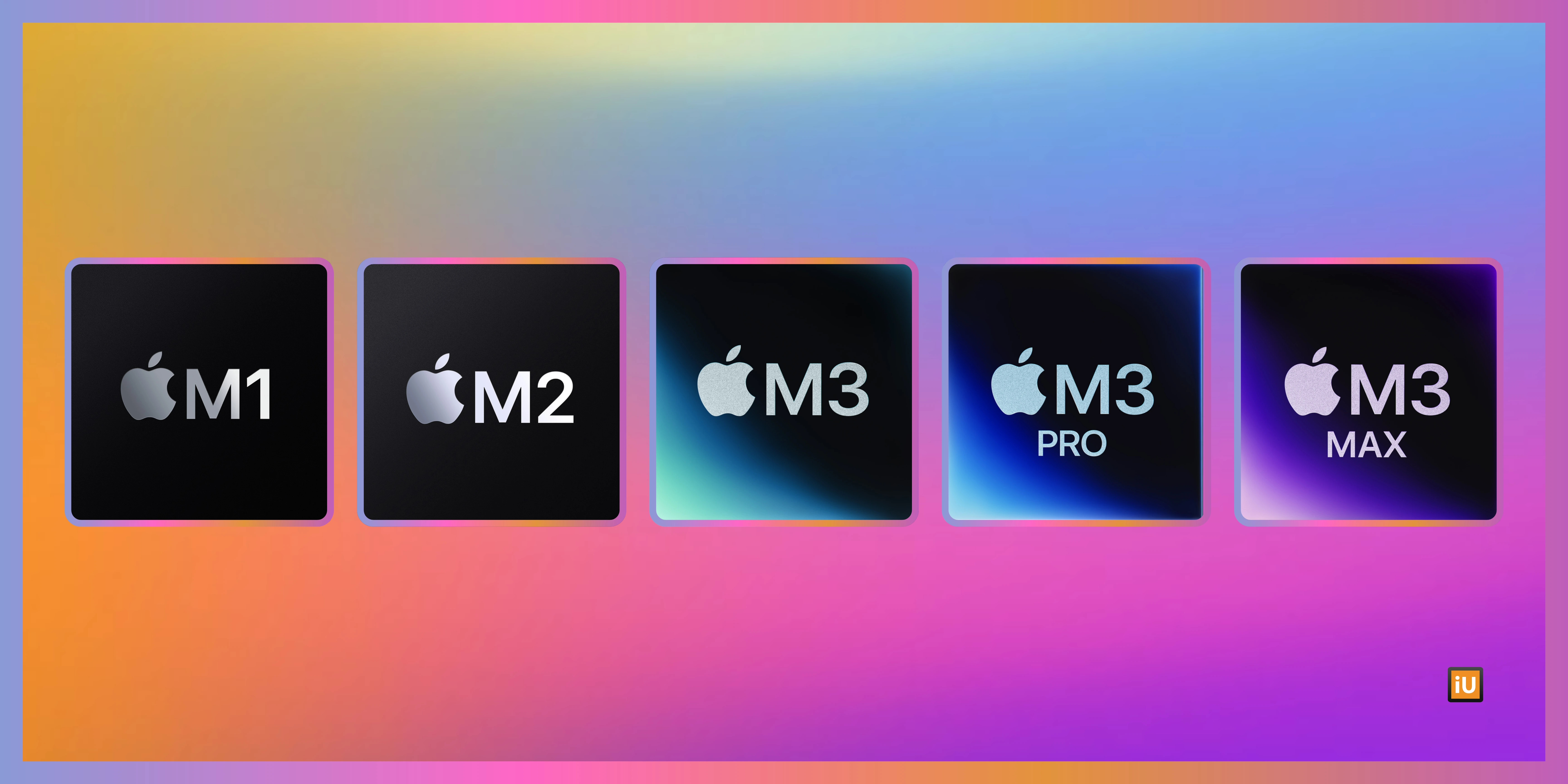16/10/2025

The Evolution of the Apple Processor: From M1 to M3
Apple has revolutionised the computing world with its own chips: the M1, M2, and M3. Since switching from Intel to Apple Silicon in 2020, Apple has demonstrated that power, efficiency, and innovation can go hand in hand. In this blog, we will take you through the technological development of these Apple processors and explore what makes each model unique.
Unique features of the M1:
The M1 impressed with its power and energy efficiency. Shortly after its launch, the M1 processor was also available as a refurbished model. Interested in our M1 models? You can find them here.
Key improvements of the M2:
The M2 was included in devices such as the MacBook Air (2022) and MacBook Pro 13” (2022). Curious about our other M2 models? Discover them here.
M3 innovations:
The M3 series (including M3 Pro and M3 Max) brings Apple closer to professional desktop performance in a portable form. Curious about which M3 models we have in stock? You can find them here.
The technological evolution from M1 to M3 shows how Apple continuously optimises: more power, longer battery life, and higher efficiency. In addition, the M1, M2, and M3 models all offer the quiet, cool operation that Apple users have come to expect.
Looking ahead, it is expected that Apple will release the M5 processor in early 2026. This chip is likely to be even more efficient and powerful, potentially featuring enhanced AI functionality and higher memory capacity. In short, plenty to look forward to.
Table of Contents
- The Switch to Apple Silicon
- The Apple M1: The First Step (2020)
- The Apple M2: More Power and Efficiency (2022)
- The Apple M3: The Future in Nanometres (2023)
- Key Differences Between M1, M2, and M3
- Apple’s Next Step: The M4 and Beyond
- Conclusion
The Switch to Apple Silicon
Until 2020, Apple used Intel processors in its MacBooks and iMacs. That changed with the introduction of the M1 chip, the first Apple processor entirely developed in-house. Apple Silicon is based on ARM architecture, the same technology used in iPhones and iPads. The result: faster performance, longer battery life, and seamless integration between hardware and software.The Apple M1: The First Step (2020)
The M1 processor was launched in November 2020, marking the beginning of a new era. The chip was built on a 5-nanometre process and featured 8 CPU cores (4 performance, 4 efficiency), an 8-core GPU, and a 16-core Neural Engine.Unique features of the M1:
- Up to 3.5× faster CPU performance than previous Intel models.
- Up to 6× faster GPU performance.
- Up to 15 hours of battery life on the MacBook Air.
- Unified Memory Architecture up to 16 GB.
The M1 impressed with its power and energy efficiency. Shortly after its launch, the M1 processor was also available as a refurbished model. Interested in our M1 models? You can find them here.
The Apple M2: More Power and Efficiency (2022)
In June 2022, Apple launched the M2, again built on a 5-nanometre process but with improved transistor architecture. Apple promised 18% faster CPU performance, 35% faster GPU performance, and a 40% faster Neural Engine.Key improvements of the M2:
- Support for up to 24 GB of Unified Memory.
- Higher memory bandwidth (100 GB/s vs 68 GB/s on the M1).
- More energy-efficient, ideal for creative professionals.
The M2 was included in devices such as the MacBook Air (2022) and MacBook Pro 13” (2022). Curious about our other M2 models? Discover them here.
De Apple M3: The Future in Nanometres (2023)
The M3 chip was launched in October 2023, marking another significant step forward. For the first time, Apple used 3-nanometre technology, making the chip more powerful and efficient while consuming less energy.M3 innovations:
- Up to 35% faster CPU and 65% faster GPU compared to the M1.
- Support for hardware-accelerated ray tracing (ideal for graphic designers and gamers).
- Dynamic Caching, enables much more efficient GPU usage.
- Up to 24 GB of Unified Memory, with even faster memory bandwidth.
The M3 series (including M3 Pro and M3 Max) brings Apple closer to professional desktop performance in a portable form. Curious about which M3 models we have in stock? You can find them here.
Key Differences Between M1, M2, and M3
| Feature | M1 (2020) | M2 (2022) | M3 (2023) |
|---|---|---|---|
| Manufacturing Process | 5 nm | 5 nm (2nd generation) | 3 nm |
| CPU | 8-core | 8-core | 8-core (enhanced) |
| GPU | Up to 8-core | Up to 10-core | Up to 10-core with ray tracing |
| Neural Engine | 16-core | 16-core (faster) | 16-core (more efficient) |
| Memory | 8–16 GB | 8–24 GB | 8–24 GB |
| Battery Life | Up to 15 hours | Up to 18 hours | Up to 22 hours |
| Performance | ★★★★☆ | ★★★★★ | ★★★★★+ |
The technological evolution from M1 to M3 shows how Apple continuously optimises: more power, longer battery life, and higher efficiency. In addition, the M1, M2, and M3 models all offer the quiet, cool operation that Apple users have come to expect.
Apple’s Next Step: The M4 and Beyond
The Apple M4 chip, introduced in May 2024, marks the next step in the evolution of Apple Silicon. This processor is built on the advanced 3-nanometre process and offers improved performance, efficiency, and powerful AI capabilities. Although the M4 is currently used mainly in the latest iPad Pro and a few upcoming Mac models, it clearly demonstrates that Apple continues to invest in innovation.Looking ahead, it is expected that Apple will release the M5 processor in early 2026. This chip is likely to be even more efficient and powerful, potentially featuring enhanced AI functionality and higher memory capacity. In short, plenty to look forward to.

